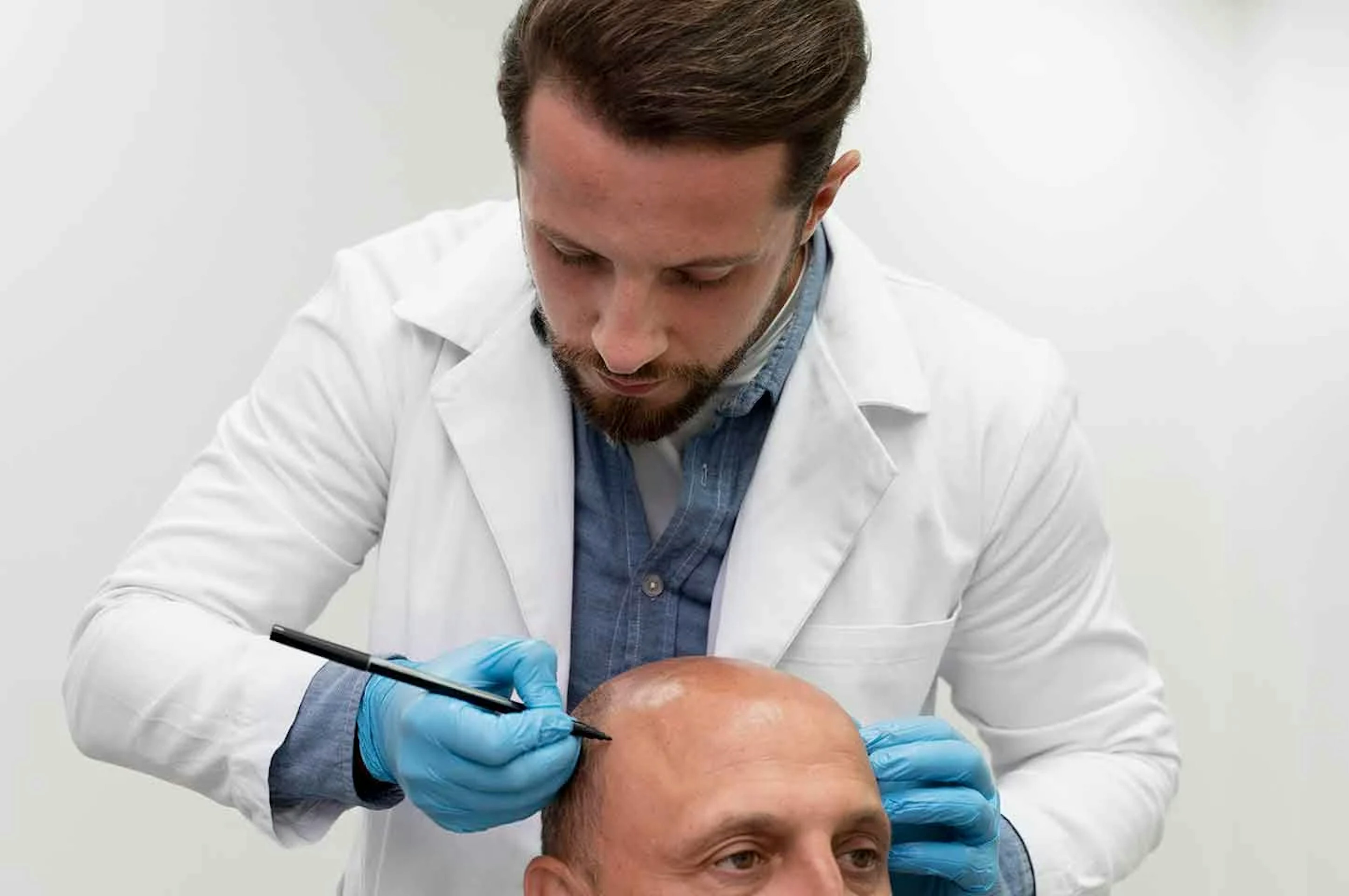
Hair transplant these days are called non-invasive treatments due to much developed methods performed compared to the traditional way of doing FUT which was a surgical procedure. FUE method came into medical Aesthetic procedure list in the year of 2000 and since then there are many changes done in the steps of the procedure from extraction to implants. These changes are done looking at the requirements of each cases based on the ethnicity, hair follicles availability and area coverage in each case of hair transplant. The hair transplant method is a medical Aesthetic method and needs some preliminary tests to be performed before proceeding for the procedure. These are blood tests and ECG which need to be performed including complete CBC tests, HBsag, Anti-hcv, CT, BT, HIV Duo and Echo cardiogram test. These tests will help the surgeon to understand the eligibility of the client to undergo the hair transplant method. Post successful scrutiny of the tests values the Surgeon examines the scalp minutely on possible infections present and the quality of the grafts available on the donor site which is required to be relocated to the recipient site. Post examination once the surgeon confirms the possibility of the procedure to be performed the date is been confirmed on mutual accent and there are some pre-operative instructions given which need to be followed and mandatory. On the day of the procedure wear a loose open chest shirt and a track pant, wash your scalp with shampoo, do a root touch up of hair color if having grey hairs on the donor site. Have a heavy breakfast but do not drink juice tea or coffee. Post breakfast take an antibiotic given by the clinic in pre-operative instructions and then come down to the clinic for the procedure. Post arrival in the clinic the Surgeon checks your scalp and the OT technicians check your vitals and give a test dose on both of your arms to see the sensitivity of the local anesthesia on your body. The surgeon marks the area and designs your hairline and shows you the drawing on your scalp for your consent. The OT technician will help you to change into a OT apron and takes you to trim your scalp hairs. Post trimming you enter the OT premises and lie down on your chest leaving the backside of your scalp exposed to the Surgeon to start giving your local anesthesia doses, pricks and injection fluid delivery in the scalp pain is experienced but its bearable. The scalp becomes numb and the extraction process starts using a FUE pen attached with a hollow 0.8 mm titanium punch. Post extraction you can take a break till the grafts are getting separated by the OT technicians and stored in a graft freezer. After the break the implanting method starts with the help of the most modern implanting technique the Sapphire store tipped pin to create maximum density, depth and direction. The implants done by Sapphire technique in MAX hair clinic also lasts more than 20 to 25 years on the scalp growing natural hairs no matter how many times you shave it or cut it. The procedure will end after the implantation is over on the entire marked area and the donor site will be covered with a surgipad but the implanted zone will be open. Go home in a cab and take rest for couple days consuming antibiotics and then come back to the clinic on the third day for surgipad removal and first head wash. Scabs appear on the implanted zone and sheds off by 10 to 12 days’ time, the hair growth becomes visible, but the grown hairs sheds off again to return back to the active anagen growth phase by the 4th month and complete the growth cycle by the 9 th month. After the hairs have grown back your glory days starts enjoying headful of hair to style and play with.



